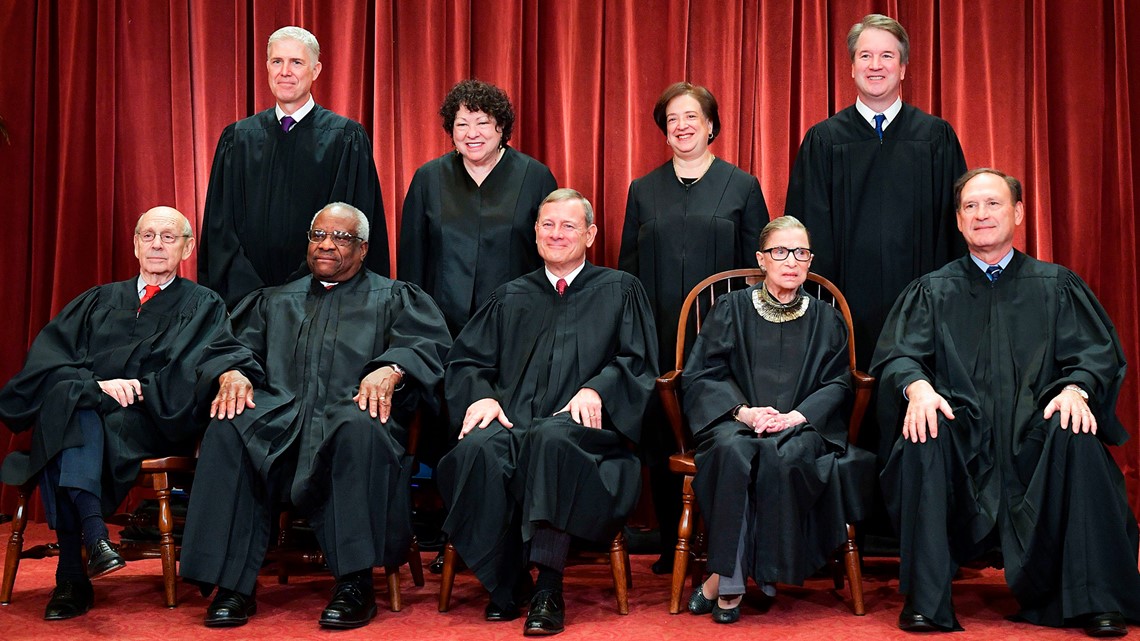Historians who try to define President George H.W. Bush's legacy would do better than to judge him by his choices for the Supreme Court.
In the middle two years of his single term in office, Bush chose one of the most liberal judges ever nominated by a Republican president, then one of the most conservative.
It wasn't long after his nomination of David Souter, who came without much of a paper trail, that the conservative legal movement had a new slogan: "No More Souters." Less than two years into his two decades on the court, Souter played an instrumental role in preserving abortion rights nationwide. He went on to establish a lengthy liberal record.
But by then, Bush – who died Friday night at 94 – had come full circle and nominated Clarence Thomas as the nation's second African-American associate justice. Thomas was a mere 43 years old and, over 27 years and counting, has become the anchor of the court's conservative wing following Associate Justice Antonin Scalia's death in 2016.
While some experts have characterized Bush's two nominations as a wash, C. Boyden Gray, who was White House counsel throughout Bush's presidency, disagrees.
“Thomas exceeded our expectations by a much wider margin than Souter may have disappointed them," Gray says. “I can’t count how many times in my presence I heard (Bush) say he was very proud of that nomination – very, very proud.”
By most accounts, Bush wasn't looking for such an odd couple, or to balance a liberal judge with a conservative. He was choosing nominees with whom he was comfortable. Both Souter and Thomas had been his choices for appeals courts. When he selected each of them for the Supreme Court, he passed over many judges with more established careers appointed by his predecessor, President Ronald Reagan.
"President Bush did not have an agenda for the courts," says Jeffrey Rosen, president of the National Constitution Center and author of several books on the Supreme Court and the American judicial system. “President Bush cared a lot about personal connections and personal loyalty, and about character.”
'High-tech lynching'
Souter was selected to replace Associate Justice William Brennan, another Republican president's choice who became a liberal justice. At the time, Bush wanted a low-key nominee in contrast to Reagan's 1987 nomination of Robert Bork, who was rejected as too conservative by a Democratic Senate.
Reagan ultimately settled in 1988 on the moderate Anthony Kennedy, whose retirement this year paved the way for new Associate Justice Brett Kavanaugh.
Souter spent the next 19 years aligned mostly with the court's liberals, and he waited until Democratic President Barack Obama was elected to step down. Now Associate Justice Sonia Sotomayor, perhaps the court's most liberal member, holds the seat.
Thomas was chosen in 1991 to replace the court's first African-American justice, the legendary Thurgood Marshall. His paper trail was almost as thin, having served on the U.S. Court of Appeals for the District of Columbia Circuit for just 16 months.
While Souter had been confirmed by an easy 90-9 vote, Thomas barely survived Anita Hill's allegations of sexual harassment in the workplace. He was confirmed, 52-48, in a circus-like atmosphere he described as "a high-tech lynching for uppity blacks who in any way deign to think for themselves."
'Longest-lasting impact'


Over the years, Bush did not publicly voice regret over the Souter nomination, though Gray says the president was disappointed in some of his opinions. On the other hand, upon Thomas' 25-year anniversary on the court in 2016, the former president described him to USA TODAY as "a very good man."
"While Justice Thomas is known both for his consistently sober demeanor on the bench and his thoughtful and respected jurisprudence, he is also widely admired for his warmth among his colleagues, law clerks and the court staff," Bush said at the time.
Christopher Landau, an appellate lawyer who argues frequently before the Supreme Court, was one of Thomas' law clerks in his first term in 1991-92. Thomas was the same deeply conservative jurist then as he is now, Landau says – though Bush may not have seen it coming.
“I don’t think he understood how important a thinker and a jurist Thomas would turn out to be," Landau says. In the end, Thomas “was perhaps the most far-reaching act of his presidency, the one with the longest-lasting impact on the country."
That Bush could move so easily from Souter to Thomas represented an "inflection point" for the Republican Party, Rosen says. Since Thomas' nomination, Democratic presidents Bill Clinton and Barack Obama and Republican presidents George W. Bush and Donald Trump each have picked two justices, and all eight have lined up as expected.
There have been no more Souters.

